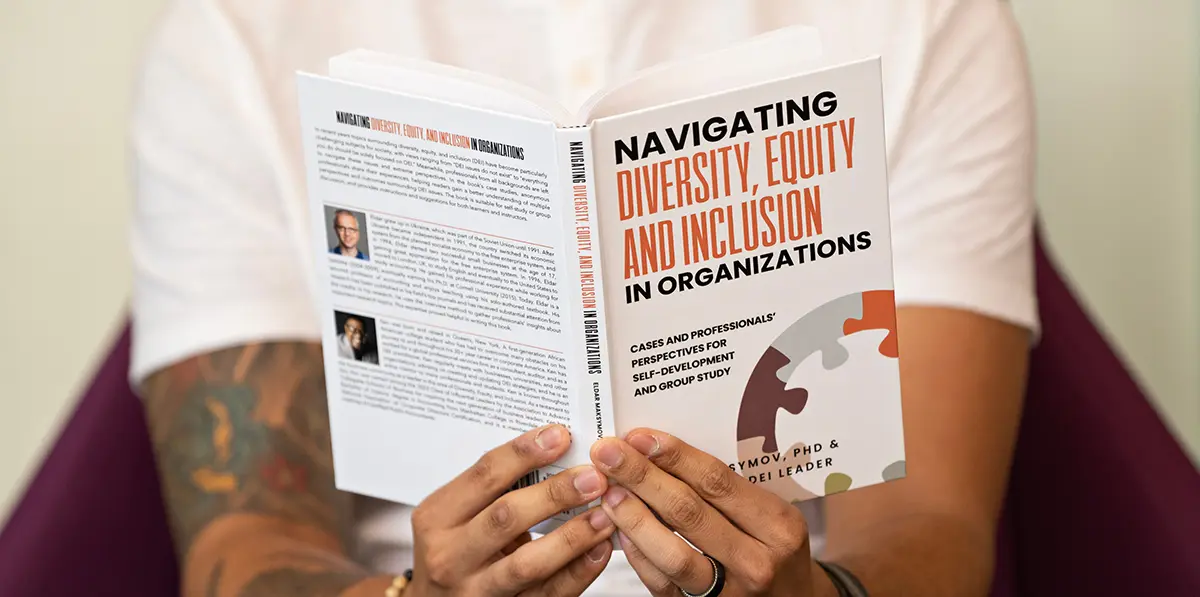
DECODING DEI
As society progresses, so too does the workplace (or so we hope).
Eldar Maksymov, associate professor of accountancy, and Ken Bouyer, director of inclusiveness recruiting at EY Americas, are the co-authors of Navigating Diversity, Equity, and Inclusion in Organizations: Cases and Professionals’ Perspectives for Self-Development and Group Study.
They say their new work may sound like a textbook written for the professional world, but it’s suitable for self-study or group discussion.
Maksymov spoke about the new book, their findings, and how to navigate a career in harmony with diversity, equity, and inclusion (DEI) principles.
Question: How is the book organized?
Answer: It includes short case studies on particularly challenging and common DEI situations that Ken and I have observed professionally. Each of the 15 short cases is followed by a substantial amount of insightful perspectives from professionals who have “been there.”
Q: Who do you see as your audience for this book?
A: Frankly, though its focus is specifically on professionals, the book is for anyone who works alongside other people in pursuit of their goals. In particular, I would highlight leaders, professionals, and students. Ken and I define “professionals” broadly in this sense—people who work together toward common goals using their expertise.
Q: What’s your message to organizations and professionals reading this book?
A: One aspect of DEI is about helping professionals understand each other better. It’s about having a relationship of trust and safety between colleagues. It’s about giving each of your colleagues the benefit of the doubt, giving each of them a fair chance. It’s like any meaningful relationship—you just have to accept that you’ll never be perfect at it, but you need to keep learning and working at it and it will keep getting better.
Q: What is the outcome or hope you have as a result of this work?
A: First, Ken and I hope that people who are well-intentioned but until now have been unsure about their abilities to navigate careers in harmony with DEI principles now feel more confident about their abilities.
We hope people like me, who have not grown up around a lot of diversity, will have a better understanding of where professionals from diverse backgrounds come from, how they feel, and how they want to be recognized for their expertise like everyone else, rather than stand out due to some characteristics related to their background or demographics.
Learn more
Discover for yourself how DEI builds relationships in the workplace. Purchase the book here:
